Visit to download the full and correct content document: https://ebookmass.com/product/work-systems-the-methods-measurement-manageme nt-of-1st-edition-ebook-pdf-version/
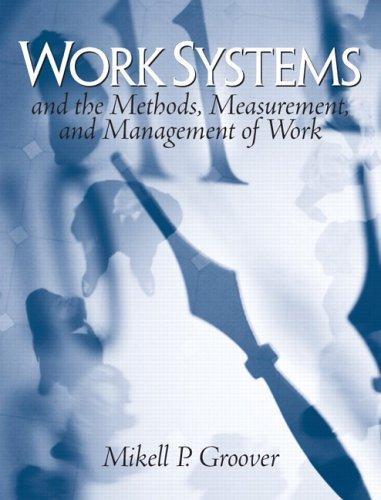
More products digital (pdf, epub, mobi) instant download maybe you interests ...
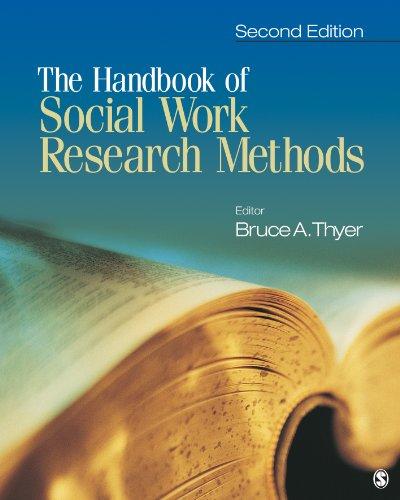
The Handbook of Social Work Research Methods – Ebook PDF Version
https://ebookmass.com/product/the-handbook-of-social-workresearch-methods-ebook-pdf-version/
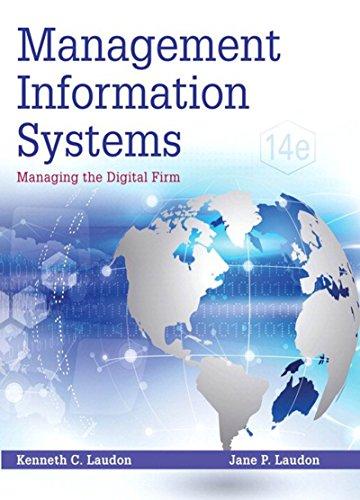
Management Information Systems: Managing the Digital Firm – Ebook PDF Version
https://ebookmass.com/product/management-information-systemsmanaging-the-digital-firm-ebook-pdf-version/

Generalist Social Work Practice 1st Edition – Ebook PDF Version
https://ebookmass.com/product/generalist-social-workpractice-1st-edition-ebook-pdf-version/
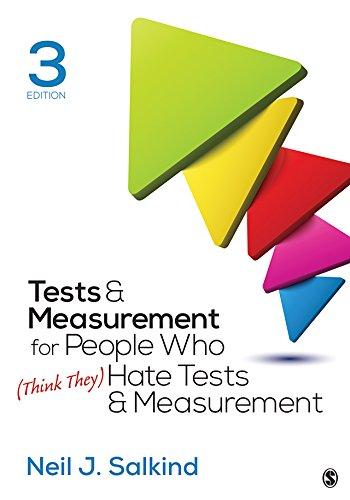
Tests & Measurement for People Who (Think They) Hate Tests & Measurement 3rd Edition – Ebook PDF Version
https://ebookmass.com/product/tests-measurement-for-people-whothink-they-hate-tests-measurement-3rd-edition-ebook-pdf-version/

Effective Grants Management 1st Edition – Ebook PDF
Version
https://ebookmass.com/product/effective-grants-management-1stedition-ebook-pdf-version/

Introduction to 80×86 Assembly Language and Computer Architecture – Ebook PDF Version
https://ebookmass.com/product/introduction-to-8086-assemblylanguage-and-computer-architecture-ebook-pdf-version/
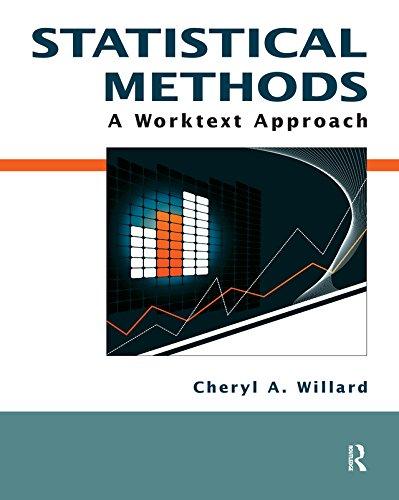
Statistical Methods: A Worktext Approach 1st Edition –Ebook PDF Version
https://ebookmass.com/product/statistical-methods-a-worktextapproach-1st-edition-ebook-pdf-version/
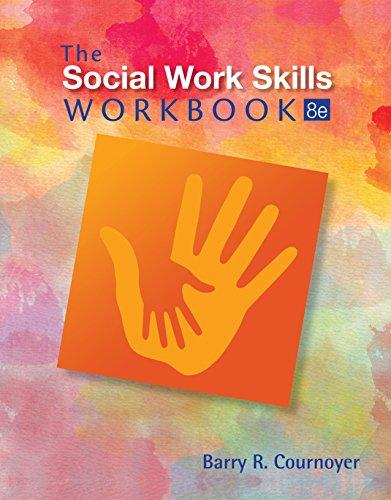
The Social Work Skills Workbook 8th Edition – Ebook PDF Version
https://ebookmass.com/product/the-social-work-skillsworkbook-8th-edition-ebook-pdf-version/
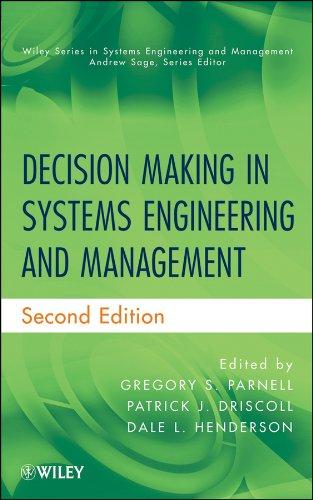
Decision Making in Systems Engineering and Management (Wiley Series in Systems Engineering and Management Book 79) – Ebook PDF Version
https://ebookmass.com/product/decision-making-in-systemsengineering-and-management-wiley-series-in-systems-engineeringand-management-book-79-ebook-pdf-version/
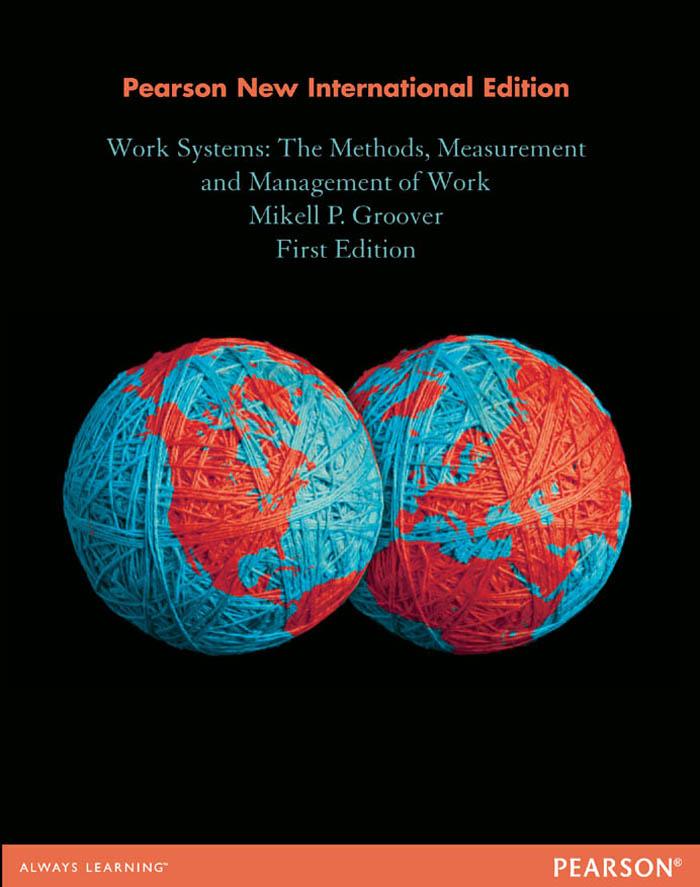
of study for many years,and some of the more significant findings and personalities that have contributed to this field are described in Historical Note 1.
HISTORICAL NOTE 1THE STUDY OF WORK
There is evidence that the study of work and some of the basic principles about work originated in ancient times [1].The Babylonians used the principle of a minimum wage around 1950 B.C.The Chinese organized work according to the principle of labor specialization around 1644 B C.The ancient Romans used a primitive form of factory system for the production of armaments,textiles,and pottery.They also perfected the military organizational structure,which is the basis for today’s line and staff organization of work.
The Industrial Revolution started in England around 1770 with the invention of several new machines used in the production of textiles, 1 James Watt’s steam engine, and Henry Maudslay’s screw-cutting lathe.These inventions resulted in fundamental changes in the way work was organized and accomplished:(1) the transfer of skill from workers to machines,(2) the start of the machine tool industry,based on Maudslay’s lathe and other new types of metal-cutting machines that allowed parts to be produced more quickly and accurately than the prior handicraft methods,and (3) the introduction of the factory system in textile production and other industries,which used large numbers of unskilled workers (including women and children) who labored long hours for low pay.The factory system employed the specialization of labor principle.
While England was leading the Industrial Revolution,the important concept of interchangeable parts manufacture was being introduced in the United States.Much credit for this concept is given to Eli Whitney (1765–1825),although others had recognized its importance [7].In 1797,Whitney negotiated a contract to produce 10,000 muskets for the U.S.government.The traditional way of making guns at the time was to custom-fabricate each part for a particular gun and then hand-fit the parts together by filing.Each musket was therefore unique.Whitney believed that the components could be made accurately enough to permit parts assembly without fitting.After several years of development in his Connecticut factory,he was able to demonstrate the principle before government officials,including Thomas Jefferson.His achievement was made possible by the special machine tools,fixtures,and gauges that he had developed. Interchangeable parts manufacture required many years of refinement in the early and mid-1800s before becoming a practical reality,but it revolutionized work methods used in manufacturing.It is a prerequisite for mass production of assembled products.
The mid- and late 1800s and early 1900s witnessed the introduction of several consumer products,including the sewing machine,bicycle,and automobile.In order to meet the mass demand for these products,more efficient production methods were required.Some historians identify developments during this period as the Second
1The machines included (1) James Hargreaves’s Spinning Jenny,patented in 1770;(2) Richard Arkwright’s Water Frame,developed in 1771;(3) Samuel Crompton’s Mule-Spinner,developed around 1779;and (4)Edmund Cartwright’s Power Loom,patented in 1785.Historians sometimes include James Kay’s Flying Shuttle introduced in 1733 in the list of great inventions of the Industrial Revolution.
Introduction
Industrial Revolution,characterized in terms of its effects on work systems by the following:(1) mass production,(2) assembly lines,and (3) scientific management. Mass production was primarily an American phenomenon.Its motivation was the mass market that existed in the United States,where the population in 1900 was 76 million and growing and by 1920 exceeded 106 million.Such a large population, larger than any western European country,created a demand for large numbers of products.Mass production provided those products.Certainly one of the important technologies of mass production was the moving assembly line,introduced by Henry Ford (1863–1947) in 1913 at his Highland Park plant.The assembly line was a new form of work system and made possible the mass production of complex consumer products. Use of assembly line methods permitted Ford to sell a Model T automobile for less than $500 in 1916,thus making ownership of cars feasible for a large segment of the American population.
The scientific management movement started in the late 1800s in the United States in response to the need to plan and control the activities of growing numbers of production workers.The most important members of this movement were Frederick W.Taylor,Frank Gilbreth,and Lillian Gilbreth.The principal approaches of scientific management were the following:(1) motion study,aimed at finding the best method to perform a given task and eliminating delays;(2) time study to establish work standards for a job;(3) extensive use of standards in industry;(4) the piece rate system and similar labor incentive plans;and (5) use of data collection,record keeping,and cost accounting in factory operations.These approaches,while revolutionary at the time they were first implemented,are fundamental and indispensable techniques used today in business and industry for work management.
Frederick W.Taylor (1856–1915) is known as the “father of scientific management”for his application of systematic approaches to the study and improvement of work.His findings and writings have influenced factory management in virtually every industrialized country in the world,especially the United States.It can be argued that much of the mass production power of the United States in the twentieth century is due to the scientific management principles espoused by Taylor.
Born in Philadelphia into an upper middle class family,Taylor attended the local Germantown Academy and then Phillips Exeter Academy in New Hampshire.His father’s wish was for young Taylor to pursue a legal career.However,after passing the entrance tests for Harvard University,poor eyesight forced him to abandon those plans.2 Instead,he became an apprentice patternmaker and machinist in 1874.In 1878,he became an employee at the Midvale Steel Company in Philadelphia and during the next 12 years progressed from machine shop worker to gang boss,foreman,and master mechanic.In 1883,he earned a mechanical engineering degree from Stevens Institute of Technology through part-time study and was promoted to chief engineer at the company.
2Taylor’s poor eyesight was apparently caused by too much nighttime study at Phillips Exeter.He was at the top of his class at the Academy.There is some speculation that young Taylor did not want to follow his father’s profession as a lawyer.He preferred to follow his own career path.His eyesight was largely recovered by 1875.
Introduction
Taylor introduced time study at Midvale Steel sometime between 1881 and 1883 while he was foreman of the machine shop.By 1883,a given task had been divided into work elements,and the timing of each element and then summing the times had been found to be more useful than timing the whole task.Taylor’s belief was that by studying each element,wasted motions could be eliminated and efficiency could thereby be improved in every step of an operation.While at Midvale,Taylor also conducted metalcutting experiments on the company’s products,which included military cannons and locomotive wheels.The experiments resulted in significant improvements in productivity in the plant.However,not all of Taylor’s proposals about work were successful. A notable example was his idea to separate the shop foreman’s job into eight specialized functions.The resulting structure is called a functional organization.
Taylor left Midvale Steel in 1889.From 1890 to 1893,he served as general manager of a company that processed wood pulp.He then became a management consultant from 1893 to 1901.During this latter period,his most important engagement was with the Bethlehem Iron Works (predecessor to the Bethlehem Steel Company) between 1898 and 1901.Two famous experiments were conducted at Bethlehem:(1)the shoveling experiment and (2) pig iron handling.
In the shoveling experiment,Taylor observed that each yard worker brought his own shovel to work,and the shovels were all different sizes.The workers were required to shovel various materials in the yard,such as ashes,coal,and iron ore.Because the densities of these materials differed,it meant that the weight per shovelful varied significantly.Through experimentation with the workers,he determined that differentsized shovels should be used for the different materials.His conclusion was that the appropriate shovel size was one in which the load was 21 pounds.This load weight maximized the amount of work that could be accomplished each day by a worker and minimized the costs to the company.
In the study of pig iron handling, 3 Taylor believed that the yard workers who loaded pig iron from the storage yard into freight cars were not using the best method. The workers seemed to work too hard and then had to rest for too long to recover from the exertion.Their daily wage was $1.15 (in 1898) and they averaged 12.5 tons per day.Taylor confronted one of the men named Schmidt and offered him the opportunity to earn $1.85 per day if he followed Taylor’s instructions on how to perform the work.The instruction consisted of improvements in the way the pig iron was picked up,carried,and dropped off,combined with more frequent but shorter rest breaks. Enticed by the opportunity to earn more money,Schmidt agreed. 4 By using the improved method,Schmidt was able to consistently load 47 tons per day.Other workers were eager to sign on for the higher pay.
3Pig iron is the iron tapped from a blast furnace.It contains impurities and must be subsequently refined to make cast iron and steel.
4In fact,Taylor dreamed up the name Schmidt.The worker’s real name was Henry Knolle.Opponents of Taylor and scientific management circulated reports in 1910 that Schmidt had died from overworking to achieve the 47 tons per day.The truth is that Henry Knolle lived on until 1925,dying at the age of 54.
Introduction
In 1901,Taylor retired to his estate in Philadelphia but continued to promote the emerging field of scientific management through lectures and publications such as Shop Management (1903), On the Art of Cutting Metals (1906),and Principles of Scientific Management (1911).Perhaps Frederick W.Taylor’s most important contribution in the improvement of work was his successful promotion and promulgation of the field of scientific management during the period of his retirement.
Frank Gilbreth (1868–1924) is noted for his pioneering efforts in analyzing and simplifying manual work.He was associated with the scientific management movement in the late 1800s and early 1900s,in particular for his achievements in motion study.He is sometimes referred to as the “father of motion study.”Two of his important theories about work were (1) that all work was composed of 17 basic motion elements that he called “therbligs”and (2) the principle that there is “one best method”to perform a given task.
As a young man,Gilbreth had planned to attend college but was forced to get a job due to his father’s untimely death.He started as a bricklayer’s apprentice in 1885 at age 17.On his first day at work,Gilbreth noticed that the bricklayer assigned to teach him laid bricks in three different ways,one in normal working,a second when working fast,and a third when instructing Gilbreth.He also noticed that other bricklayers used other methods,all of which seemed to be different.It occurred to Gilbreth that there should be one best way to accomplish bricklaying,and all bricklayers should use that one best method.Gilbreth analyzed the work elements that were required in bricklaying,attempting to simplify the task and eliminate wasted motions.He was able to develop a method that reduced the number of steps required to lay one brick by about 70 percent.He participated in the development of a bricklayer’s scaffold that could be adjusted in height so the worker would have bricks and mortar at the same elevation level as he was working rather than be required to stoop to ground level to retrieve these materials.The movable scaffold is still used today.
By age 26,Gilbreth decided to go into business for himself and became a widely recognized building contractor in New York City.One of the reasons for his success was the capability of his crews to complete a project quickly,a result of his interest in time and motion study.He was able to apply the principles of time and motion study to the labor of construction workers and other industrial employees so as to increase their efficiency and output.Ultimately,he would become one of the leading public speakers for Taylor’s scientific management movement.
In 1904,Gilbreth married Lillian Moller,a teacher and psychologist who collaborated in his research on motion study,contributing an emphasis on the human and social attributes of work.In 1911,Gilbreth published Motion Study,a book that documented many of their research findings.Around 1915,they founded the management consulting firm of Frank B.Gilbreth,Inc.When Frank died prematurely in 1924,Lillian assumed the presidency of the firm and carried on his work as a researcher and advocate of motion and time study.She became a noted educator,author,engineer,and consultant in her own right.
Lillian Gilbreth (1878–1972) was the oldest of nine children.She earned bachelor’s and master’s degrees at the University of California,Berkeley.During her marriage to Frank,she became the mother of 12 children and earned a doctorate at Brown
University in 1915,a rare achievement for a woman at the time.Her other accomplishments were equally noteworthy.With her husband,she co-authored four books: A Primer of Scientific Management (1914), Fatigue Study (1916), Applied Motion Study (1917), and Motion Study for the Handicapped (1917).On her own,she wrote The Psychology of Management (1914) and several other books after Frank’s death.She also held faculty positions at Purdue University (1935–1948) and several other universities.Among the many honors and awards she received during her lifetime,one of the most significant was her election to the National Academy of Engineering.She was the first woman ever to be elected to the NAE.With good reason,she has been called the “First Lady of Engineering.”
The story of how Frank and Lillian Gilbreth practiced efficiency and motion study in their own home was humorously documented by two of their 12 children in 1949 with the publication of Cheaper by the Dozen.It was made into a motion picture in 1950.
1 THE NATURE OF WORK
For our purposes, work is defined as an activity in which a person exerts physical and mental effort to accomplish a given task or perform a duty.The task or duty has some useful objective.It may involve one or more steps in making a product or delivering a service.The worker performing the task must apply certain skills and knowledge to complete the task or duty successfully.There is usually a commercial value in the work activity,and the worker is compensated for performing it.By commercial value,we mean that the task or duty contributes to the buying and selling of something (e.g.,a product or service),which ultimately provides the means of paying for the work.Work is also performed in government,but its value is surely measured on a scale other than commercial.
In physics, work is defined as the displacement (distance) that an object moves in a certain direction multiplied by the force acting on the object in the same direction.Thus, physical work is measured in units of newton-meters (N-m) in the International System of Units (metric system) or foot-pounds (ft-lb) in U.S.customary units.This definition can be reconciled with our labor-oriented work definition by imagining a material handling worker pushing a cart across a warehouse floor by exerting a force against the cart to move it a certain distance.However,human work includes many activities other than the muscular application of forces to move objects.Nearly all human work activities include both physical and mental exertions by the worker.In some cases,the physical component dominates the activity,while in others the mental component is more important.In virtually all work situations,the activity cannot be performed unless the worker applies some combination of physical and cognitive effort.
1.1 The Pyramidal Structure of Work
Work consists of tasks.A task is an amount of work that is assigned to a worker or for which a worker is responsible.The task can be repetitive (as in a repetitive operation in mass production) or nonrepetitive (performed periodically,infrequently,or only once). A task can be divided into its constituent activities,which form the pyramidal structure
Figure 1 The pyramidal structure of a task.Each task consists of multiple work elements, which in turn consist of multiple basic motion elements.
shown in Figure 1.Each task consists of several work elements,and each work element consists of basic motion elements. Basic motion elements are actuations of the limbs and other body parts while engaged in performing the task.These basic motion elements include reaching for an object,grasping an object,or moving an object.Other basic motions include walking and eye movement (e.g.,eye focusing,reading).Multiple basic motion elements are generally required to perform a work element,which is defined as a series of work activities that are logically grouped together because they have a unified function within the task.For example,a typical assembly work element consists of reaching for a part,grasping it,and attaching it to a base part,perhaps using one or more fasteners (e.g.,screws,bolts,and nuts).Many such work elements make up the total work content of assembling all of the components to the base part.Work elements usually take six seconds or longer,while a basic motion element may take less than a second. The entire task may take 30 seconds to several minutes if it is a repetitive task,while nonrepetitive tasks may require a much longer time to complete.
Just as a task can be divided into its component activities (work elements each consisting of multiple basic motion elements),the typical job of a worker is likely to consist of more than one task.Thus the job adds a next higher level to the existing pyramid.Furthermore,a worker’s career is likely to consist of more than one job,as he or she changes employers and/or advances through several jobs with a single employer during a lifetime of working.Accordingly,one might envision the ultimate work pyramid as consisting of the five levels shown in Figure 2.
1.2 Importance of Time
In nearly all human endeavors,“time is of the essence.”In sports,time is often the major factor in deciding the outcome of a contest.The fastest time wins the race.In games that use time periods,the victor must score the winning points within the limits of those periods.In other aspects of life,time is also important.Students must be in class on time.They must complete an hour quiz in 50 minutes (or other designated time limit).Medical patients must schedule appointments with their doctors at specific times.When we drive to a given
Figure 2 The pyramidal structure of work.
destination,whether it is a long vacation trip or a nearby shopping expedition,we select the route that will get us there in the shortest possible time.Why waste time and gasoline? Time is important in business and industry,as the following examples demonstrate:
• New product introduction. The manufacturer introducing a new product to the market in the shortest time is usually the one rewarded with the most profits.
• Product cost. In many cases,the number of labor hours required to produce a product represents a significant portion of total manufacturing cost,which determines the price of the product.Companies that can reduce the time to make a product can sell it at a more competitive price.
• Delivery time. Along with cost and quality,delivery time is a key criterion in vendor selection by many companies.The supplier that can deliver its products in the shortest time is often the one selected by the customer.
• Overnight delivery. The success of overnight delivery offered by parcel transport companies (e.g.,UPS,Fed Ex) illustrates the growing commercial importance of time.
• Competitive bidding. In many competitive bidding situations,proposals must be submitted by a specified date and time.Late proposals will be disregarded.
• Production scheduling. The production schedule in a manufacturing plant is based on dates and times.
Time is important in work.The many reasons why this is so include the following:
•The most frequently used measure of work is time.How many minutes or hours are required to perform a given task?
•Most workers are paid according to the amount of time they work.They earn an hourly wage rate or a salary that is paid on a weekly,biweekly,or monthly basis.
•Workers must arrive at work on time.If a worker is a member of a work team,his or her absence or tardiness may handicap the rest of the team.
•When production workers are paid on an incentive plan,they earn their bonuses based on how much time they can save relative to the standard time for a given task.
•Labor and staffing requirements are computed using workloads measured in units of time.For example,how many workers will be required during a 40-hour week to accomplish a workload of 600 hours?
2 DEFINING WORK SYSTEMS
A work system can be defined as (1) a physical entity and (2) a field of professional practice.Both definitions are useful in studying the way work is accomplished.
2.1 Physical Work Systems
As a physical entity,a work system is a system consisting of humans,information,and equipment that is designed to perform useful work,as illustrated in Figure 3.The result of the useful work is a contribution to the production of a product or the delivery of a service.Examples of work systems include the following:
•A worker operating a production machine in a factory
•An assembly line consisting of a dozen workers at separate workstations along a moving conveyor
•A robotic spot welding line in an automobile final assembly plant performing spot welding operations on sheet metal car bodies
•A freight train transporting 60 intermodal container cars from Los Angeles to Chicago
•A parcel service agent driving a delivery truck to make customer deliveries in a local area
•A receptionist in an office directing visitors to personnel in the office and answering incoming telephone calls
Figure 3 A work system consists of human workers,information,and equipment designed to accomplish useful work by means of a process.
•A designer working at a computer-aided design (CAD) station to design a new product
•A construction project consisting of a work crew building a highway bridge
As our list indicates,a work system can include one or more human workers.It can also include automated systems that operate for extended periods of time without human attention.Sooner or later,automated systems require the attention of human workers for purposes of maintenance or reprogramming or other reasons.The information associated with the work system may consist simply of a worker’s knowledge required to perform an operation,or it may involve the use of databases and programs that must be accessed using computer systems.The equipment in a work system may be a single machine tool operated by one worker or a collection of automated machines that operate under computer control in a coordinated fashion.
2.2 Work Systems as a Field of Professional Practice
As a field of professional practice, work systems includes (1) work methods,(2) work measurement,and (3) work management.5 The term work science is often used for this professional practice.The field of work methods consists of the analysis and design of tasks and jobs involving human work activity.Terms related to work methods include operations analysis and methods engineering.The term motion study is also used,but its scope is usually limited to the physical motions,tools,and workplace layout used by a worker to perform a task.The other terms are less restrictive and include the analysis and design of complex processes consisting of material and information flows through multiple operations.
Work measurement is the analysis of a task to determine the time that should be allowed for a qualified worker to perform the task.The time thus determined is called the standard time.Among its many applications,the standard time can be used to compute product costs,assess worker performance,and determine worker requirements (e.g.,how many workers are needed to accomplish a given workload).Because of its emphasis on time,work measurement is often referred to as time study.However,in the modern context, time study has a broader meaning that includes work situations in which an operation is performed by automated equipment,and it is desired to determine the cycle time for the operation.Thus,time study covers any and all work situations in which it is necessary to determine how long it takes to accomplish a given unit of work,whether the work unit is concerned with the production of a product or the delivery of a service. Time is important because it equates to money (“time is money,”as the saying goes), and money is a limited resource that must be well managed in any organization.
Work management refers to the various organizational and administrative functions that must be accomplished to achieve high productivity of the work system and effective supervision of workers.Work management includes functions such as (1) organizing workers to perform the specialized tasks that constitute the workload in each
5The title of this text emphasizes the two definitions:(1) work systems as physical entities and (2) work systems as a field of professional practice.
department of the company or other organization,(2) motivating workers to perform the tasks,(3) evaluating the jobs in the organization so that each worker is paid an appropriate wage or salary commensurate with the type of work performed,(4) appraising theperformance of workers to reward better-performing workers appropriately,and (5)compensating workers using a rational payment system for the work they perform.
3 TYPES OF OCCUPATIONS
The Bureau of Labor Statistics of the U.S.Department of Labor identifies 821 occupations in its Standard Occupational Classification (SOC).The SOC covers virtually every type of work performed for pay or profit in the United States,and organizes these occupations into 23 major groups,based on type of work and/or industry sector.The categories are listed in Table 3.Representative positions and job titles are also given.
Rather than use the 23 categories in the SOC system,it is convenient for our purposes to group occupations into the following four broad categories that reflect the work content and function of the jobs rather than type of work and industry sector:
• Production workers,in which the work involves making products.
• Logistics workers,in which the work involves moving materials,products,or people.
• Service workers,in which the work involves one or more of the following functions:(1) providing a service,(2) applying existing information and knowledge, and (3)communicating.
• Knowledge workers,in which the work involves one or more of the following functions:(1) creating new knowledge,(2) solving problems,and (3) managing.
These categories are correlated with the types of work systems used in business,industry,and government.Production workers have jobs in production systems (manufacturing,construction),logistics workers are employed in logistics systems (transportation, material handling),service workers work in service operations (retail,government,health care),and knowledge workers are involved in knowledge-oriented activities (creative work,problem solving,management).
The characteristics and representative job titles of the four categories are summarized in Table 4.We see that production and logistics workers engage in mostly physical labor,while service and knowledge workers perform duties that require mostly cognitive activities.Overlaps exist.Production and logistics workers must utilize their brains in their jobs,while the work of service and knowledge workers usually includes physical activities.
A key feature among the four categories is worker discretion [17],which refers to the necessity to make responsible decisions and exercise judgment in carrying out the duties of the position.Jobs that are highly standardized and routine require minimum worker discretion,while jobs in which workers must adapt their behavior in response to variations in the work situation require high discretion.As indicated in Table 4,production and logistics workers are required to use limited or moderate discretion in performing their duties,while service and knowledge workers must exercise much greater discretion in their jobs.In production and logistics operations,the objective is to complete
TABLE 3 Major Occupation Categories of the U.S. Department of Labor Standard Occupational Classification
SOC #Occupation CategoryRepresentative Positions and Job Titles
11Management OccupationsChief executive officer,construction manager,funeral director,hotel manager,postmaster,plant manager,sales manager,school principal
13Business and Financial Accountant,auditor,claims adjuster,cost estimator,financial analyst, Operations Occupationsloan officer,purchasing agent,tax collector
15Computer and Actuary,computer programmer,systems analyst,database Mathematical Occupationsadministrator,mathematical analyst,software engineer,statistician
17Architecture and Architect,drafter,engineering technician,engineers (e.g.,civil, Engineering Occupationselectrical,industrial,mechanical),landscape architect,surveyor
19Life,Physical,and Social Agricultural scientist,astronomer,chemist,economist,geoscientist, Science Occupationsmaterials scientist,physicist,psychologist,sociologist
21Community and Social Clergy,family therapist,marriage counselor,high school counselor, Services Occupationsmental health worker,probation officer,social worker
23Legal occupationsCourt reporter,judge,law clerk,lawyer,legal assistant,magistrate, paralegal,title examiner
25Education,Training,and College professor,elementary school teacher,high school teacher, Library Occupationskindergarten teacher,librarian,special educator,teacher assistant
27Arts,Design,Actor,artist,athlete,coach,composer,dancer,fashion designer, Entertainment,Sports movie director,musician,news reporter,referee,singer and Media Occupations
29Healthcare Practitioners Chiropractor,clinical technician,dental hygienist,dentist,paramedic, and Technical pharmacist,physician,psychiatrist,nurse,therapist,veterinarian Occupations
31Healthcare Support Dental assistant,medical assistant,nursing aide,orderly,pharmacy Occupationsaid,physical therapist,veterinary assistant
33Protective Services Bailiff,detective,firefighter,fire inspector,game warden,jailer, Occupationspolice officer,private investigator,security guard
35Food Preparation and Bartender,chef,cook,dishwasher,dining room host/hostess,fast food Serving Occupationsworker,food preparation worker,waiter,waitress
37Building and Grounds Groundskeeper,grounds maintenance worker,housekeeping cleaner, Cleaning and janitor,landscape worker,maid,pest control worker,tree trimmer Maintenance
39Personal Care and Service Animal trainer,barber,bellhop,concierge,cosmetologist,fitness Related Occupationstrainer,flight attendant,funeral attendant,hairdresser,usher
41Sales and Related Cashier,salesperson,insurance agent,model,real estate broker, Occupationssales engineer,sales representative,telemarketer,travel agent
43Office and Administrative Bank teller,bill collector,bookkeeper,hotel desk clerk,office Support Occupationsmanager,receptionist,police dispatcher,secretary,stock clerk
45Farming,Fishing,and Agricultural inspector,animal breeder,farm worker,fishing worker, Forestry Occupationsforest and conservation worker,hunter,logging worker,ranch hand
47Construction and Bricklayer,building inspector,carpenter,cement mason,construction Extraction Occupationslaborer,electrician,oil drill operator,painter,plumber,roofer
49Installation,Maintenance,Aircraft mechanic,automotive mechanic,home appliance repairer, and Repair Occupationslocksmith,office machine repairer,security system installer
51Production OccupationsAssembly worker,bookbinder,food processing worker,foundry mold maker,machinist,sewing machine operator,welder
53Transportation and Material Aircraft pilot,bus driver,crane operator,garbage collector,material Moving Occupationshandling worker,sailor,ship captain,truck driver
55Military Specific Air crew member,infantry soldier,military officer,radar technician, Occupationssonar technician,special forces commando
Source: From the Bureau of Labor Statistics,www.bls.gov/soc.
Introduction
TABLE 4 Comparison of Work Characteristics of Four Categories of Workers
Worker CategoryProduction WorkersLogistics WorkersService WorkersKnowledge Workers
Basic functionsMake productsMove materials,Provide service Create knowledge products,or peopleApply information Solve problems and knowledge Manage and Communicatecoordinate
Type of workMostly physicalMostly physicalMostly cognitiveMostly cognitive
Worker discretionLimitedLimited to moderateModerate to broadBroad
Equipment Machinery systemsMachinery systems Computer systems Computer systems required for (production tools (transportation,Communication Information resources basic workand machines)material handling)systems
Industry and Manufacturing Transportation Banking Management professional Construction Distribution Government service Designing examplesAgriculture Material handling Health careLegal Power generationStorageRetailEducation Consulting
Representative Laborer Truck driver Bank tellerManager positions and Machine operator Airplane pilot Police officer Physician job titlesAssembly worker Ship captain Nurse Designer
Machinist Material handler Physical trainer Researcher
Quality inspector Order picker Salesperson Lawyer Construction workerShipping clerkForemanTeacher
Source: Adapted from a figure in [17].
TABLE 5 Characteristics of Jobs Requiring Low and High Worker Discretion
Characteristics of Jobs Requiring Low DiscretionCharacteristics of Jobs Requiring High Discretion
The work is performed at one location.Workers determine where they will do their jobs. Almost any able-bodied person could perform The work depends heavily on technical knowledge the work if provided with basic training.and prior experience.
The work is dominated by machinery operation,Workers manage their own schedules and the routine procedures,or predetermined activities.processes used to perform their jobs.
The methods,techniques,and materials are Workers determine the methods,techniques,and specified.materials they use in their jobs.
The work requires interactions with the same Workers must deal with different types of people in people every day.their daily work activities.
Work performance is measured primarily in Work performance is measured primarily in quantitative terms.qualitative terms.
Source: Adapted from [17].
the work precisely as specified and with minimum variation.In service and knowledge operations,the objective is to deal in a discretionary way with situations and people that are inherently variable.Typical characteristics associated with jobs requiring low discretion and jobs requiring high discretion are listed in Table 5.
The relative proportions of workers in various occupational categories are given in Table 6,based on data in an article by Bailey and Barley [2].The table covers most of the twentieth century for the United States,and indicates trends in the labor force
TABLE 6 Relative Percentages of Occupations in the U.S. Workforce: 1900–1998
Source: Adapted from [2]. a Totals do not add to 100% due to round-off errors.
during this period in which the total U.S.population grew from 76 million to approximately 280 million.The data published in [2] are organized into eight occupational categories,which we have grouped into two major categories,consistent with the worker classification in this text:(1) production and logistics workers and (2) service and knowledge workers.At the beginning of the twentieth century,nearly three-quarters of U.S. workers were employed in farming,skilled trades,factories,and manual labor,which we have grouped as production and logistics workers.Only one-quarter was employed as service and knowledge workers.One hundred years later,the proportions had reversed. Today,most occupations fall within the category of service and knowledge work.
4 PRODUCTIVITY
Productivity is defined as the level of output of a given process relative to the level of input.The term process can refer to an individual production or service operation,or it can be used in the context of a national economy.Productivity is an important metric in work systems because improving productivity is the means by which worker compensation can be increased without increasing the costs of the products and services they produce.This leads to more products and services at lower prices for consumers,which improves the standard of living for all.In this section we define labor productivity and examine the theoretical basis for increasing productivity.
4.1 Labor Productivity
The most common productivity measure is labor productivity,defined by the following ratio:
Introduction
where LPR = labor productivity ratio, WU = work units of output,and LH = labor hours of input.The definition of output work units depends on the process under consideration.For example,in the steel industry,tons of steel is the common measure.In the automobile industry,the number of cars produced is the appropriate output measure.In both industries,it is important to know how many labor hours are required to produce one unit of output.This measure can be used to compare the labor efficiencies of different companies in a given industry,or to compare the same industries among different nations. Obviously,fewer labor hours are better and mean higher productivity.A company or a country that can produce the same output with fewer input labor hours not only has a higher productivity;it also has a competitive advantage in the global economy.
Although labor productivity is a commonly used measure,labor itself does not contribute much to improving productivity.More important factors in determining and improving productivity are capital and technology. Capital refers to the substitution of machines for human labor;for example,investing in an automated production machine to replace a manually operated machine.The automated machine can probably operate at a higher production rate,so even if a worker is still needed to monitor the operation, productivity has been increased.If the worker is no longer needed at the machine,then labor productivity has been increased even more. Technology refers to a fundamental change in the way some activity or function is accomplished.It is more than simply using a machine in place of a human worker.It is using a brand new type of machine to replace the previous type.Some examples of how new technologies have made dramatic improvements in productivity are listed in Table 7.
Admittedly,the distinctions between capital improvements and technology improvements are sometimes subtle,because new technologies almost always require capital investments.Anyway,arguing about these differences and subtleties is not as important as recognizing that the important gains in productivity are generally made by the introduction of capital and technology in a work process,rather than by attempting to extract more work in less time from workers.By investing in capital and technology to increase the rate of output work units and/or reduce input labor hours,the labor productivity ratio is increased.
TABLE 7 Examples of Technology Changes that Dramatically Improved Productivity
Old TechnologyNew TechnologyImprovement
Horse-drawn cartsRailroad trainsSubstitution of steam power for horse power,use of multiple carts (passenger or freight cars)
Steam locomotiveDiesel locomotiveSubstitution of diesel power technology for steam power technology
Telephone operatorDial phoneDial technology allowed “clicks”of the dial to be used to operate telephone switching systems
Dial phoneTouch-tone phoneSubstitution of tone frequencies in place of “clicks”to operate telephone switching systems for faster dialing
Manually operated Numerical control Substitution of coded numerical instructions to operate milling machinemilling machinethe milling machine rather than a skilled machinist
DC3 passenger Boeing 747 passenger Substitution of jet propulsion for piston engine for airplane (1930s)airplane (1980s)higher speed,larger aircraft for more passenger miles
Introduction
Measuring productivity is not as easy as it seems.Although the labor productivity ratio defined by equation (1) appears simple and straightforward,the following problems are often encountered in its measurement and use:
• Nonhomogeneous output units. The output work units are not necessarily homogeneous.For example,using the annual production of automobiles as the output measure does not account for differences in models,vehicle sizes,and prices.An expensive luxury model is likely to require more labor hours of assembly time than an inexpensive compact car.
• Multiple input factors. As previously indicated,labor is not the only input factor in determining productivity.In addition to capital and technology,other input factors may include materials and energy.For example,in the production of aluminum, electric power and the raw material bauxite are much more important than labor as inputs to the process.6
• Price and cost changes. The prices of output work units and the costs of input factors (labor,materials,power) change over time,often unpredictably.A company may improve productivity,but if the prices of its products decrease due to market forces,the company could find itself in severe financial difficulty.The steel industry in the United States during the late 1990s and early 2000s provides a perfect example of this case.
• Product mix changes. Product mix refers to the relative proportions of products that a company sells.If the mix of expensive and inexpensive products changes from year to year,an annual comparison based on the labor productivity ratio is less meaningful.
An alternative productivity measure is the labor productivity index that compares the output/input ratio from one year to the next.The productivity index is defined as follows:
LPI = LPRt LPRb
where LPI = labor productivity index, LPRt = labor productivity ratio during some time period of interest,and LPRb = labor productivity ratio during some defined base period.
Example 1Productivity Measurement
During the base year in a small steel mill,326,000 tons of steel were produced using 203,000 labor hours.In the next year,the output was 341,000 tons using 246,000 labor hours. Determine (a) the labor productivity ratio for the base year,(b) the labor productivity ratio for the second year,and (c) the labor productivity index for the second year.
Solution(a) In the base year,tons per labor hour.
LPR = 326,000 203,000 = 1.606
(b) In the second year,tons per labor hour.
LPR = 341,000 246,000 = 1.386
6Bauxite is the principal ore used to produce aluminum.It consists largely of hydrated aluminum oxide (Al2O3 H2O).
(c) The productivity index for the second year is .
Comment: No matter how it is measured,productivity went down in the second year.
4.2 Productive Work Content
Work is usually not performed in the most efficient way possible.A given task performed by a worker can be considered to consist of (1) the basic productive work content and (2) excess nonproductive activities.In general,the task is associated with the production of a product or the delivery of a service.The basic productive work content is the theoretical minimum amount of work required to accomplish the task,where the amount of work is expressed in terms of time.Thus,the time required to perform the basic productive work content is the theoretical minimum.It cannot be further reduced.The basic productive work content time is a theoretical concept implying optimal conditions that rarely,if ever,are achieved in practice.Nevertheless,it is an optimum worth seeking. The excess nonproductive activities in the task are the extra physical and mental actions performed by the worker that do not add any value to the task,nor do they facilitate the productive work content that does add value.The excess nonproductive activities take time.They add to the basic productive work content time to make up the total time needed to perform the task.The excess nonproductive activities can be classified into three categories,as illustrated in the time line in Figure 4:
•Excess activities caused by poor design of the product or service
•Excess activities caused by inefficient methods,poor work layout,and interruptions
•Excess activities caused by the human factor
Some examples of the three categories of nonproductive activities are listed in Table 8. As several of these examples indicate,nonproductive activities do not necessarily occur during every cycle of the task.For example,industrial accidents occur infrequently in most work situations.However,over the long run,their effects extract a heavy toll on productive work content.
Figure 4 Total task time consists of basic productive work content and nonproductive activities.
